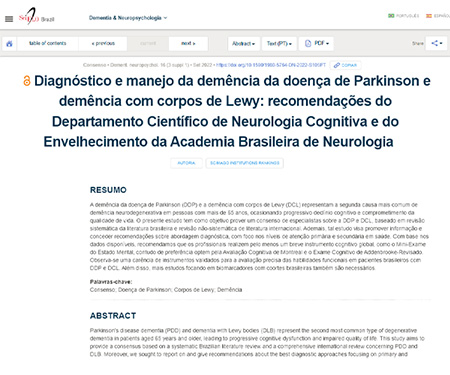Diagnóstico e manejo da demência da doença de Parkinson e demência com corpos de Lewy: recomendações do Departamento Científico de Neurologia Cognitiva e do Envelhecimento da Academia Brasileira de Neurologia
A demência da doença de Parkinson (DDP) e a demência com corpos de Lewy (DCL) representam a segunda causa mais comum de demência neurodegenerativa em pessoas com mais de 65 anos, ocasionando progressivo declínio cognitivo e comprometimento da qualidade de vida.








